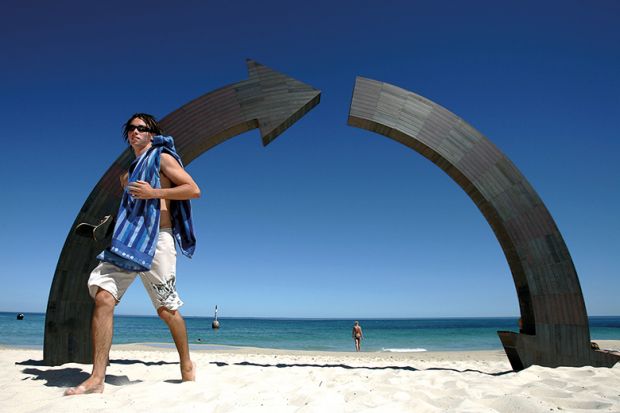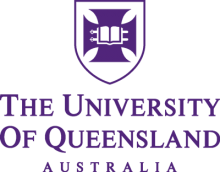Domestic rather than international student flows are emerging as the major challenge for Australian universities, as the buoyant labour market – widely credited for luring foreign students into the country – and the rising cost of living discourage locals from enrolling.
With 2022 institutional accounts now released by more than a quarter of Australia’s public universities, a clear pattern has emerged of international enrolments rebounding as domestic interest wanes.
Undergraduate and master’s enrolments declined last year at all 10 of the institutions that have released their accounts, and overall student numbers fell at all but one. Meanwhile, international students’ share of university places grew at nine of the 10 institutions.
University of Melbourne analyst Frank Larkins said the trend was a reversal of 2021, when domestic recruitment had “largely compensated” for an unexpectedly mild downturn in international enrolments. He said warnings that international education revenue would “fall away rapidly for a few years” had proven unfounded.
“There are a few cases where universities seem to have made surprising gains,” Professor Larkins said on international recruitment. “Overall, universities have been more resilient than many of us predicted and more resilient than most other industries.”
Vice-chancellors had predicted a horror 2022 for international earnings, with the impact of closed borders – which had been masked in previous years by the large number of continuing foreign students – expected to become apparent as incumbents completed their courses.
But the annual reports released so far offer little evidence of this, with overseas student revenue having grown last year at four of the 10 institutions that have reported their accounts.
At the University of Queensland, one of the giants of Australian international education, income from overseas students fell by less than 3 per cent. And it shrank by just 1 per cent at the University of Western Australia and at Curtin University, both of which earn well over A$100 million (£54 million) a year from international tuition fees.
At Griffith and James Cook universities, where international student earnings are of a similar scale, takings rose by 4 per cent and 18 per cent, respectively. Across all 10 institutions, net international earnings rose by more than 1 per cent.
But eight of the 10 institutions attracted declining revenue from Hecs-Help, the loan scheme for undergraduates. Eight reduced their takings from Fee-Help, which is used primarily by domestic postgraduates. And eight pocketed less money from the Commonwealth Grant Scheme, which subsidises study at both levels. Across these three programmes, funding for the 10 universities fell by more than 3 per cent.
The figures suggest that Australian universities face more disruption from domestic conditions than from international settings. “A strong jobs market, combined with rising costs of living, makes full-time study less attractive to domestic students,” Curtin noted in its annual report.
Griffith said it did not expect to return to surplus until 2026, and this would require growth in both domestic and international student numbers. James Cook vice-chancellor Simon Biggs said attracting and retaining students “remains a challenge in regional centres”.
Demographic projections show the number of Australians of school-leaving age rising steadily, with the growth rate set to accelerate from 2024 – a legacy of an early 2000s policy to boost Australia’s birth rate. Nevertheless, undergraduate applications are continuing to slip from last year’s modest levels, according to figures released so far by state-based agencies.
Applications to Sydney’s Universities Admissions Centre were 5 per cent down on last year’s figures, while the caseload at Perth’s Tertiary Institutions Service Centre was 11 per cent lower.
POSTSCRIPT:
Print headline: Losses on the home front proving costly for Australian universities
Register to continue
Why register?
- Registration is free and only takes a moment
- Once registered, you can read 3 articles a month
- Sign up for our newsletter
Subscribe
Or subscribe for unlimited access to:
- Unlimited access to news, views, insights & reviews
- Digital editions
- Digital access to THE’s university and college rankings analysis
Already registered or a current subscriber? Login














